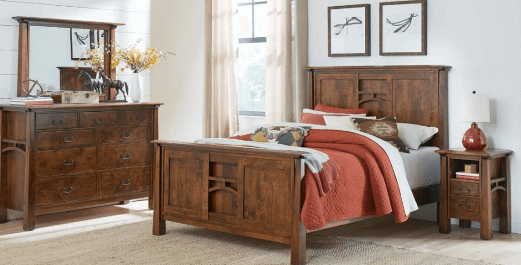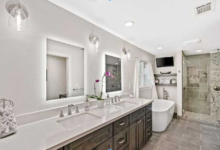Common Furniture Sizing Mistakes and How to Avoid Them

When it comes to furnishing a home, one of the most overlooked yet critical aspects is sizing. Even the most stylish and high-quality furniture can feel wrong in a room if it’s too large, too small, or simply not proportioned correctly. While aesthetics often take center stage, functionality and fit can make or break your interior design. Let’s explore some of the most common furniture sizing mistakes people make—and more importantly, how to avoid them.
Mistake #1: Not Measuring Your Space Properly
It may sound obvious, but many buyers make decisions based on rough estimates or memory. A sofa that looks perfect in a showroom may completely overwhelm your living room. Or a dining table that seemed reasonably sized online could block walkways in your actual space.
Solution: Always take precise measurements of the room where the furniture will go. This includes not only the floor area but also ceiling height, window placements, doorways, and any built-in features like radiators or fireplaces. Use painter’s tape to map out the item’s dimensions on the floor to get a true sense of its footprint. Some people even create scaled paper models or use augmented reality apps to visualize their furniture before buying.
Mistake #2: Ignoring Scale and Proportion
Even when measurements are accurate, scale can be deceiving. For example, a large sectional might technically “fit” in a room but still feel cramped if the ceilings are low or the room is narrow. Likewise, a tiny coffee table in a large room can look lost and out of place.
Solution: Consider the visual balance of your space. Choose furniture that is proportional to the room’s overall size and the other items in it. For instance, if your living room has high ceilings and wide windows, go for furniture with some height and width to match. Many positive Coleman Furniture reviews mention how detailed product descriptions and dimension guides on the site helped buyers avoid this exact issue.
Mistake #3: Forgetting About Clearance and Walkways
Buying furniture isn’t just about the piece itself; it’s about how it interacts with its surroundings. One of the most common missteps is failing to leave enough room for people to walk around furniture.
Solution: Keep the golden rule of clearance in mind—leave at least 30 to 36 inches of walking space around major furniture pieces. This is particularly important in areas with high foot traffic like dining rooms and living rooms. For dining tables, leave at least 36 inches from the edge of the table to the wall or any other furniture so chairs can be pulled out comfortably.
Mistake #4: Choosing the Wrong Sofa Depth or Bed Height
People often focus solely on length and width, but depth and height matter just as much, especially when it comes to comfort. A deep sofa might feel luxurious in a store but can make sitting uncomfortable for shorter individuals. Similarly, a bed that’s too high or too low can be difficult to get in and out of, especially for older adults or those with mobility issues.
Solution: Test furniture in person when possible, or read detailed online reviews and product specs. Look for mentions of seat depth, back height, and leg clearance. For example, many Coleman Furniture reviews praise the site for giving precise comfort dimensions, which can help shoppers determine whether a sofa or bed will suit their body type and needs.
Mistake #5: Overlooking Multi-Purpose Room Needs
In today’s homes, rooms often serve more than one function. A living room might double as a home office, or a dining room might be used for homework and games. Furniture that’s too large can limit a room’s flexibility and functionality.
Solution: Opt for versatile, space-saving furniture when working with multi-purpose spaces. Look for nesting tables, extendable dining tables, and modular seating that can be reconfigured as needed. Measuring for multiple uses—such as space for a pull-out sleeper sofa or room to open a laptop on the dining table—is key.
Mistake #6: Failing to Account for Delivery Logistics
It’s not just about whether the furniture fits in your room—it also needs to get there. Many people have purchased a beautiful piece only to realize it won’t fit through the front door, up the stairs, or around a tight hallway corner.
Solution: Measure all access points in your home: doorways, stairwells, and elevator openings if applicable. Don’t forget to check turning angles and ceiling clearances in hallways. If a piece comes unassembled or in parts, make sure to confirm that with the retailer. Many furniture retailers, including those like Coleman Furniture, include shipping and assembly details to help avoid these headaches.
Mistake #7: Assuming One-Size-Fits-All
Every home is unique, and what works in one setting may not suit another. Assuming that a “standard” size will always be a safe bet often leads to mismatched furniture and a less cohesive design.
Solution: Customize when possible. Some furniture brands offer multiple size options for sofas, tables, and beds. Take the time to compare choices and opt for the size that aligns best with your room’s dimensions and your lifestyle. When you’re shopping online, filter by size and use the retailer’s customer service to ask about custom sizing or additional specifications.
See also: How Type Foundry is Elevating Design with Professional Fonts
Final Thoughts
Avoiding common sizing mistakes doesn’t require a design degree—just attention to detail and a bit of planning. By measuring thoroughly, considering scale, leaving adequate clearance, and thinking ahead to delivery logistics, you can ensure your furniture not only looks great but also fits your life.
Many shoppers now rely on detailed reviews and online tools to guide their decisions. Coleman Furniture reviews, for example, often highlight customer experiences with fit and comfort, making it easier for others to shop confidently. Whether you’re outfitting a new space or replacing a single item, taking the time to get sizing right will save you money, stress, and disappointment in the long run.



